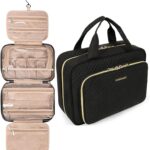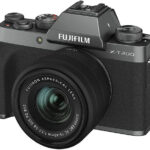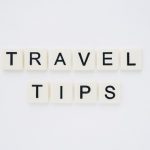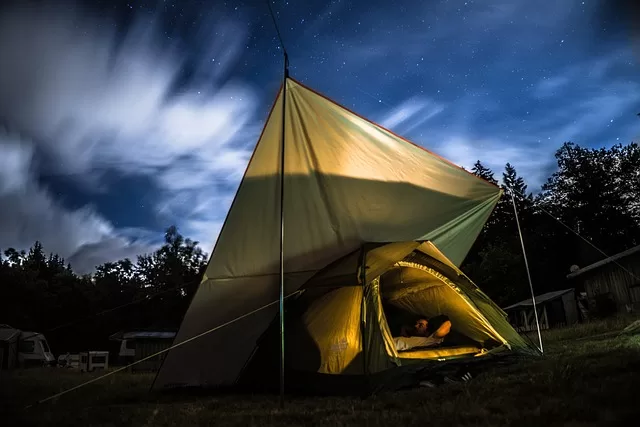Are you ready for your next adventure in the great outdoors? Before you pack up your tent and head out into nature, make sure you have comprehensive camping first aid and emergency kit handy. I can’t stress enough how important it is to be prepared for any situation – you never know when you’ll need that extra bandage or blister pad.
We learned this lesson the hard way when one of our friends took a spin while hiking and ended up with a serious injury. But because we had packed a first aid kit, we were able to immediately tend to the wound and get our friend the help they needed. It was a good reminder to always be prepared and have the necessary supplies at hand.
That’s why I’ve compiled the ultimate camping first aid and emergency kit checklist to help you make sure you have everything you need for your trip to freely enjoy all the fun things to do while camping. From bandages and gauze to fire starters and a flashlight, we’ve got you covered. Don’t wait until it’s too late – pack up your kit early and get ready to have peace of mind on your next camping trip. Trust me, you’ll be glad you did. On that note, check out this comprehensive list of all things you need in your camping first aid and emergency kit.
Basic First Aid Items to Include in Your Kit

These are the list of items that must always be found in your camping first aid and emergency kit.
Band-aids
Band-aids and other wound dressings are a must-have in any first-aid kit. You never know when you’ll need to cover up a cut or scrape, so it’s always good to have a variety of sizes and types on hand.
Antibiotic ointment
Antibiotic ointment is another essential item. It helps to prevent infection and can be used on a variety of wounds.
Pain relievers
Pain relievers like acetaminophen and ibuprofen are a must-have for any kit. Whether you’re dealing with a headache or muscle aches, these over-the-counter medications can help to alleviate pain and discomfort.
Antiseptic wipes and ointment
Antiseptic wipes and ointments are great for cleaning and protecting wounds. They help to prevent infection and can be used on cuts, scrapes, and even insect bites.
Burn ointment and blister pads
Burn ointment and blister pads are a must for any camper. Whether you’re dealing with a minor burn or a painful blister, these products can help to soothe and protect the affected area.
Allergy medication
Allergy medication like antihistamines can be a lifesaver if you’re prone to allergies or have a sensitivity to certain substances. It’s always a good idea to have some on hand in case of an allergic reaction.
Tweezers and scissors
Tweezers and scissors can come in handy for a variety of situations, from removing splinters to cutting bandages. Make sure to pack a pair in your kit.
Splinting materials
Splinting materials like a SAM splint, wooden tongue depressor, or foam roll can be used to stabilize and support injuries such as sprains or fractures. It’s a good idea to have a few options on hand just in case.
Advanced first aid items to consider
Advanced first aid items are an important addition to any first aid kit, and can make a big difference in a serious situation they include things like splints, tourniquets, and epinephrine injectors. These items can be used to help stabilize serious injuries and prevent further damage. It’s important to note that using advanced first aid items requires additional training, so make sure you are familiar with how to use them safely and effectively before relying on them in an emergency. Some of the advanced first-aid items to consider include
Prescription medications
It’s important to have any prescription medications that you or a family member may need in a first aid kit. This can include inhalers for asthma, epinephrine injectors for allergies, or other medications as prescribed by a healthcare provider. Make sure to follow the specific instructions for storing and using these medications.
Snake bite kit
Swampy regions are prone to snakes so when engaging in these things to do while camping in the rain, don’t forget to be on the lookout and always go with a snake bite kit. A snake bite kit is a specialized first aid kit that is used to treat snake bites. It typically includes items such as a suction device and antivenom medication. It’s important to remember that the best way to prevent snake bites is to avoid contact with snakes and to stay away from areas where they are known to live.
Suture kit
A suture kit is a collection of medical supplies that are used to close wounds by sewing them together. It typically includes items such as suture thread, needles, and scissors. Suture kits should only be used by trained healthcare professionals or individuals who have received proper training in wound closure.
Tourniquet
A tourniquet is a device that is used to stop blood flow to a particular part of the body. It is usually applied to the limb and tightened until the bleeding stops. Tourniquets should only be used in emergency situations when other methods of stopping bleeding have failed or are not possible.
IV fluids and administering equipment
Intravenous (IV) fluids are liquids that are administered directly into the bloodstream through a needle or catheter. They are used to hydrate the body, provide nutrients, and/or deliver medications. IV fluids should only be administered by trained healthcare professionals or individuals who have received proper training in IV therapy.
Essential Emergency Items to Include in Your Kit
When you’re camping, it’s always a good idea to be prepared for emergencies. You never know when you might need to deal with unexpected situations, such as getting lost, dealing with injuries, or facing adverse weather conditions. That’s why it’s important to pack a kit of emergency items that you can use to help you handle these types of situations. By packing these emergency items in your camping kit, you’ll be better prepared to handle any unexpected situations that may arise while you’re out in the wilderness.
Extra clothes and rain gear
It’s always a good idea to pack extra clothes and rain gear when you go camping, just in case you get caught in bad weather or have an unexpected change in the forecast. It’s better to be prepared than to be stuck out in the cold and wet without the proper gear.
Food and water
It’s important to pack enough food and water to last you for at least three days. It is always best to pack up camping stoves and cooking gear with the plan to cook while camping to stay healthy. However, food and water are for emergencies, especially when backpacking, and you never know when you might get stranded or have to wait for rescue, so it’s important to have enough supplies to last you until help arrives.
Water Purification Tablets or a Water Filter
When you’re camping, it’s not always possible to find clean drinking water. Carry along a camping water bottle and hydrating systems as well as a pack of water purification tablets or a water filter to help make sure the water you’re drinking is safe.
Fire Starting Materials
Fire is essential for warmth, cooking, and signaling for help in an emergency. Make sure you have matches or a lighter with you so you can start a fire if you need to and master the art of building a perfect camping fire to make this an easy peasy fun thing to do while camping at night.
A flashlight or headlamp with extra batteries
A flashlight or headlamp is essential for illuminating your way in the dark. Make sure you have extra batteries with you in case your light runs out of power.
A signaling device
A signaling device like a whistle or flare can be used to signal for help in an em
ergency. It’s a good idea to have one with you in case you need to attract the attention of rescuers.
A multi-Tool or Knife
A multi-tool or knife is a handy tool to have on hand when you’re camping. It can be used for everything from cutting rope to opening cans to starting a fire.
Emergency Shelter
An emergency shelter like a tarp or space blanket can provide you with some protection from the elements if you get stranded or have to wait for rescue. Make sure to check out these camping tents and shelters and that you have one with you when you go camping.
Tips for Packing and Organizing Your Kit
Packing and organizing your camping kit is an important part of the camping experience. By properly packing and organizing your gear, you’ll be better prepared for your trip and have an easier time setting up camp and finding what you need when you need it. Here are a few tips to help you pack and organize your camping kit:
Keep Items Organized and Easily Accessible
It’s important to keep your first aid and emergency kit organized so that you can easily find and access items when you need them. Consider packing items in clear, sealable plastic bags or containers and labeling them clearly.
Don’t Forget to Restock Items as Needed and Replace any Expired Items
Make sure to check your first aid and emergency kit regularly to ensure that all items are in good condition and that you have enough supplies. Replace any expired items and restock items that are running low before your next trip.
Consider the Climate and Specific Activities You’ll be Doing on Your Trip
Think about the climate and activities you’ll be doing while camping and pack accordingly. For example, if you’ll be in a hot, dry climate, you may want to bring extra sunscreen and hydration supplies. If you’ll be engaging in activities like hiking or rock climbing or other sunny days camping things to do, you may want to include additional first aid supplies like blister dressings and wound care items.
Make Sure Your Kit is Lightweight and Easy to Carry
It’s important to keep your first aid and emergency kit lightweight and easy to carry, especially if you’ll be backpacking or traveling long distances. Consider using small, lightweight containers and camping backpacks and bags for packing items, and take only the essentials.
Familiarize Yourself with the Items in Your Kit and How to Use Them
Before you head out on your camping trip, make sure you know how to use all of the items in your first aid and emergency kit. This will help you feel more prepared and confident in the event of an emergency. You may also want to consider taking a first aid class or workshop to learn more about basic first aid and emergency care.
Conclusion
As a camper, it’s essential to be prepared for any situation that may arise while enjoying the great outdoors. That’s where a comprehensive camping first aid and emergency kit comes in. Not only will it give you the peace of mind that you’re ready for anything, but it can also be a lifesaver in case of an emergency.
Note that having the ultimate kit isn’t just about buying a pre-made one and calling it a day. It’s about creating your own personalized kit to suit all your needs and the people coming along and be sure to regularly check and restock it before any new trip to make sure it’s ready for your next adventure. Don’t let a lack of preparation ruin your outdoor fun – take the time to create and maintain your own camping first aid and emergency kit. Trust me, you’ll be glad you did.



























